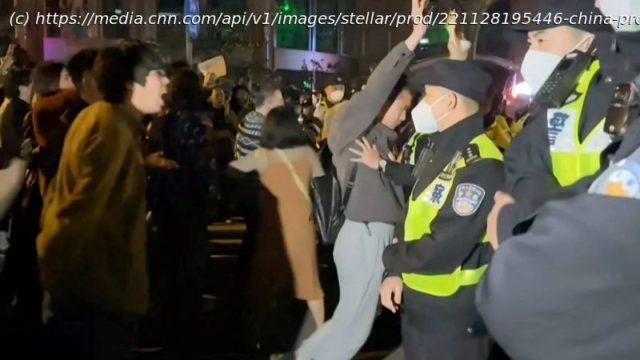Protests against China’s prolonged and restrictive Covid regulations spread across the country over the weekend. The demonstrations against Chinese President Xi Jinping and his costly zero-Covid policy are an exceedingly rare case of widespread civil disobedience.
Protests against China’s prolonged and restrictive Covid regulations spread across the country over the weekend. The demonstrations against Chinese President Xi Jinping and his costly zero-Covid policy are an exceedingly rare case of widespread civil disobedience.
While the protests represent an unprecedented challenge for Xi, they also carry economic and market implications. Oil plunged and hit 2022 lows on Monday, while shares of companies that rely on China for production felt the heat. Apple fell by 2.6% following reports that unrest at one of its factories could result in 6 million fewer iPhone Pros this year.
What’s happening: China’s controversial zero-Covid policy has affected everyday life and weighed heavily on the economy. When outbreaks get bad enough, entire cities are closed: Shanghai was shut down for about two months this spring and Chengdu, a city of 21 million people, was locked down in the fall.
Earlier this month, Beijing eased some Covid-related restrictions, sparking hopes that the economy could soon fully reopen, but local governments once again tightened controls as cases surged. The policy doesn’t seem to be working, as cases hit record highs, but China’s low vaccination rate, relatively ineffective vaccines and aging population mean the alternative could be very deadly.
The mounting political tension has also been difficult to interpret. The protests at first seemed focused on Covid restrictions, but now appear to carry broader demands for political reform: The blank sheets of paper held up by demonstrators in Shanghai, the country’s financial hub, have already become iconic symbols of defiance against a government that limits free speech.
Economic impact: People under lockdowns say they struggle to find food and other necessities. Economic growth has slumped and unemployment has been been rising as a consequence of the lockdowns.
The policy has also led to major global production constraints that are sustaining inflation. Global supply chain pressures increased moderately in October after five consecutive months of easing, largely due to increases in Asian delivery times, according to the Federal Reserve Bank of New York’s Global Supply Chain Pressure Index.






